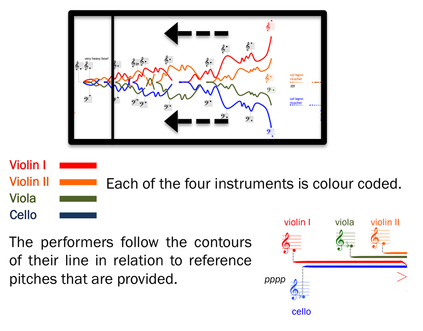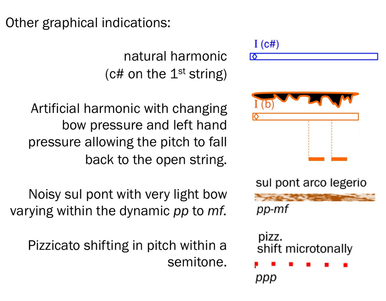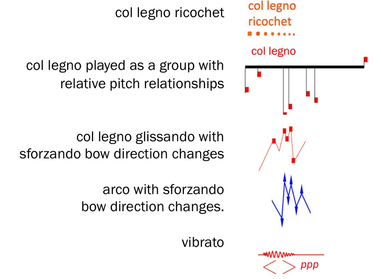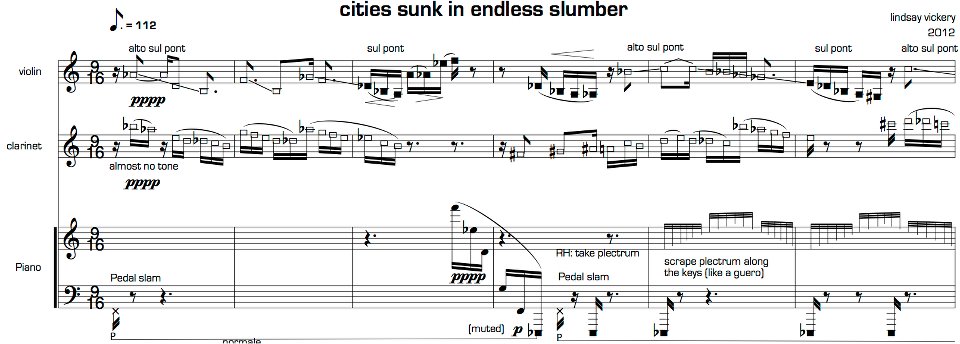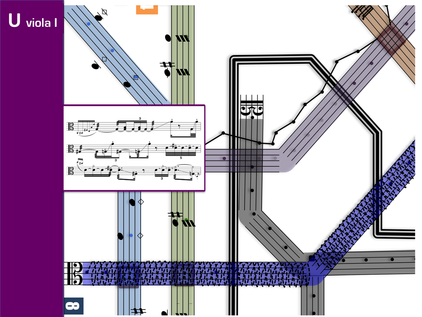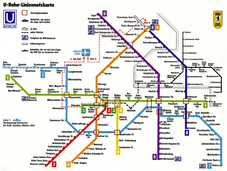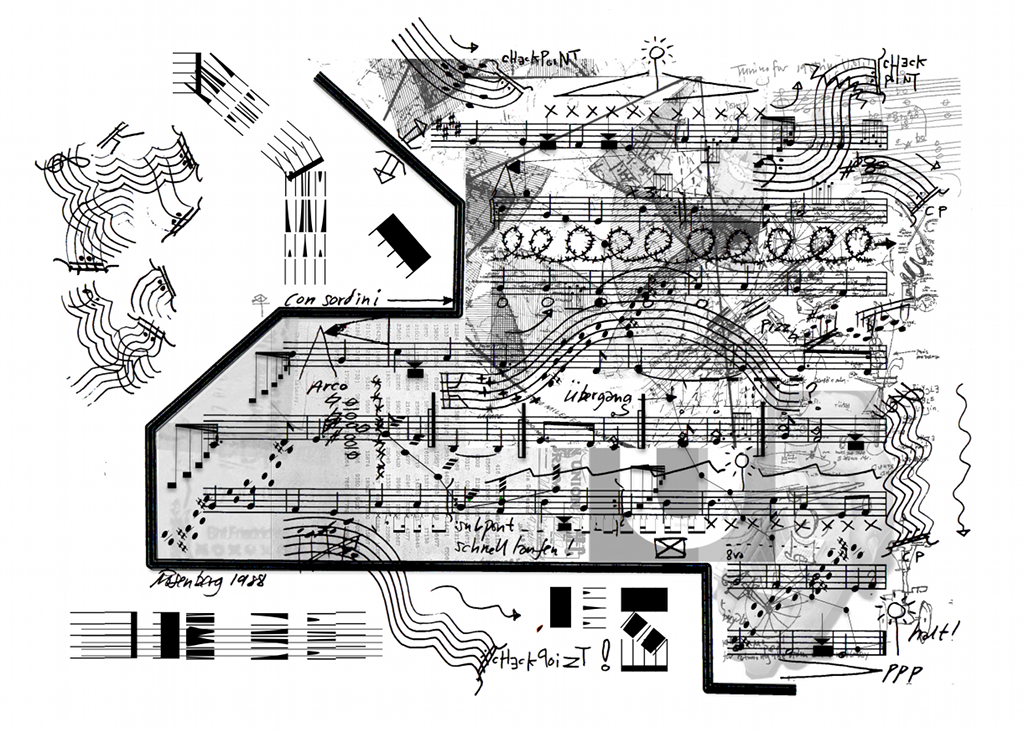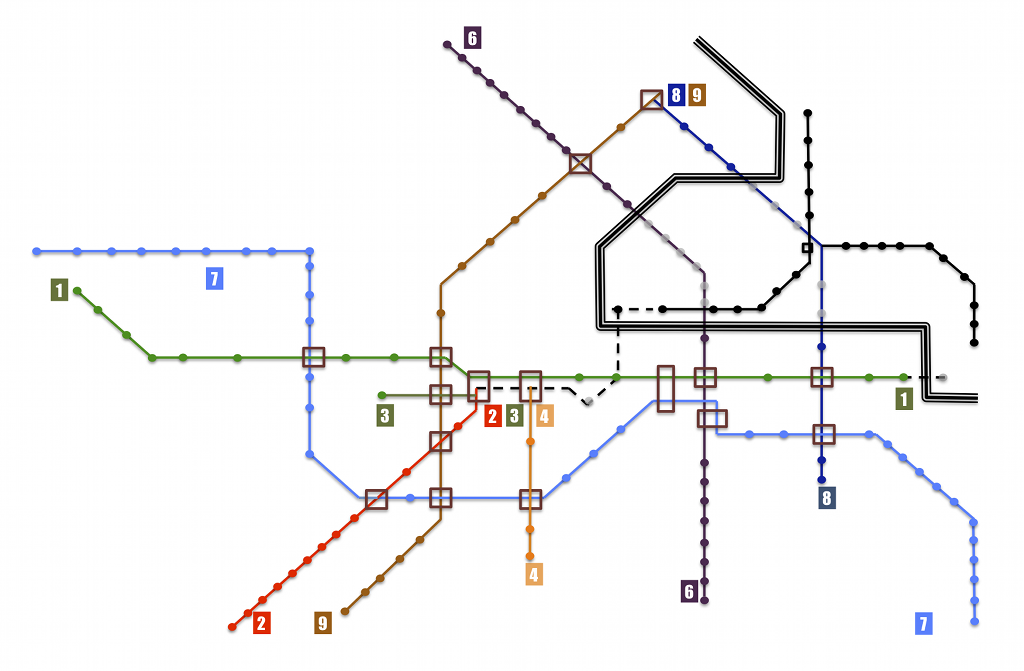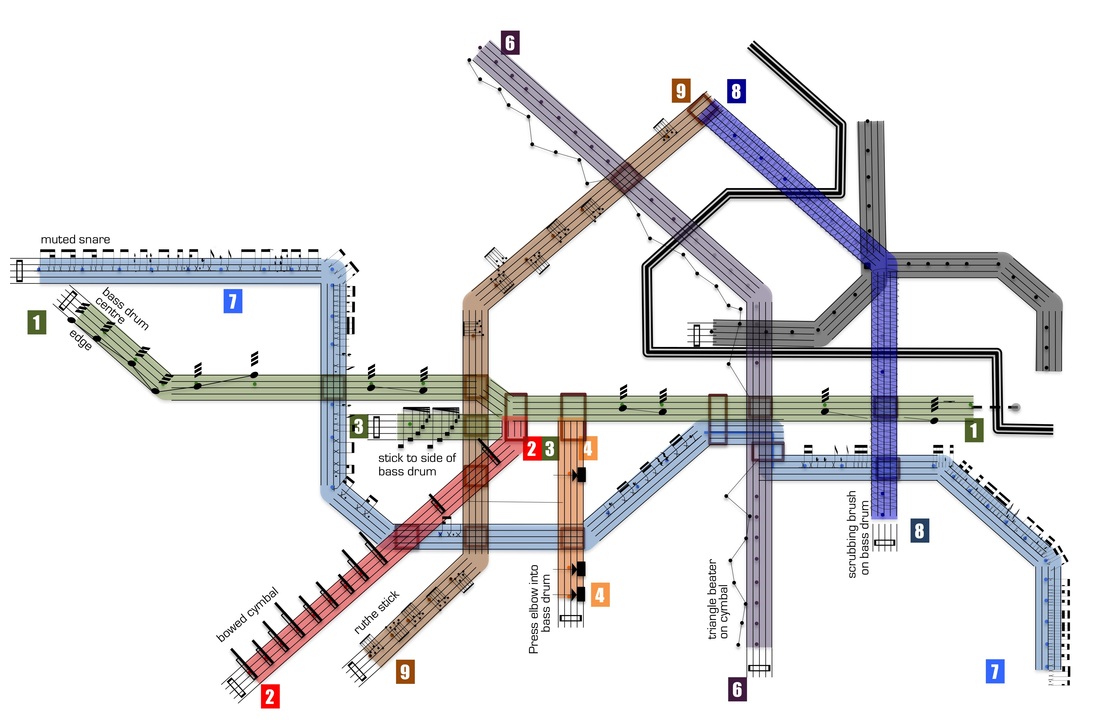2012
128 Agilus, Mimoid, Symmetriad [2012] string quartet and electronics 9m
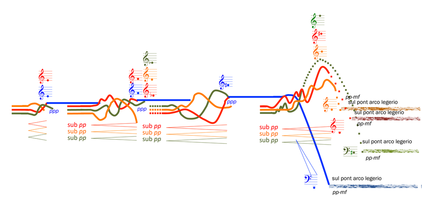
Agilus, Mimoid, Symmetriad takes its name from three of the "oceanic formations" of the sentient planet Solaris, as described by Stanislav Lem in his 1961 novel of the same name. The work employs a scrolling score allowing for coordination of complex and continuously evolving structures. The instructions from the score are below on the left. A video of the scrolling score (sort of) sync-ed to a performance by decibel is below. In the score all of the parts are superimposed retaining their absolute pitch and duration in relation to one another in a manner similar to a sonogram. The notation is strictly proportional with a balance between specification (given by orientation pitches at certain points) and freedom to follow the graphical contour of the part. In performance each play can select an individual part displaying only their own music.
|
|
Performances:
20121019 (string quartet version) Sonya Maher, Caitlin Huxtable, Rebecca Smith, Tristen Parr. Shock of the New. WAAPA Auditorium. 20121203 Decibel Sounding a Room, Hackett Hall, Perth 20150505 (electronic version) Andrew Brown, Toby Gifford, Craig Perry, Lloyd Barrett and Tom Green: Griffith University, Queensland. |
127 study for no-input bass clarinet no. 2 [2012] bass clarinet 12m
In a second study exploring the potential of the no-input bass clarinet in which a microphone in the bell is used to bring amplificationt to the edge of feedback. The feedback is "played" by changing fingerings on the instrument. In this study a different microphone and more detailed equalisation of the frequencies emitted by the bass clarinet, allowed for a greater range of pitches to be formed. In study no. 2, a standard dynamic SM57 microphone was placed in the bell. Again the study explored the range of pitches that may be drawn from this configuration and the impact of the striking of keys on the production of feedback tones, however in this work it was possible to produce all of the sounds entirely from changes to the resonant air column (via finger movements) and no additional impulses were used to create sounds.
First Performed by Lindsay Vickery on 19 June 2012 2012at Noizemachin #12, The Artifactory Osborne Park, Perth.
First Performed by Lindsay Vickery on 19 June 2012 2012at Noizemachin #12, The Artifactory Osborne Park, Perth.
Performances:
20120619 Lindsay Vickery, Noizemaschin!! #12, The Artifactory, Perth
20120619 Lindsay Vickery, Noizemaschin!! #12, The Artifactory, Perth
126 cities sunk in endless slumber [2012] violin, clarinet and piano 6m
|
cities sunk in endless slumber [2012] for violin, clarinet and piano
Taking its title from the proto-surrealist poetry of André Breton and Phillipe Soupault’s The Magnetic Fields [1919], cities sunk in endless slumber explores the gradual transformation of tiny murmurings of fragments. A number of pathways for the materials are followed, some more expansive, others eventually collapsing back into fragments. The method of composition was inspired in part by the free associative techniques of Breton and Soupault, and a desire to transition between grid-like structures and passages that appear to slip “off the grid”. Listen here. |
Performances:
2013 Catherine Cahill, Shaun Lee and Emily Green-Armytage, Luminosity: Musical Treasures from UWA (2013) CD
2013 Catherine Cahill, Shaun Lee and Emily Green-Armytage, Luminosity: Musical Treasures from UWA (2013) CD
125 Hivemind [2012] for Laptop Orchestra 6m
Two MaxMSP patches are installed on multiple computers. Patch 1 allows performers to controlthe frequency, volume, portamento time and distortion of a sine tone using the spacebar, up/down arrows, return and s keys, respectively. The second patch records and manipulates sound from the environment (including the other computers) and allows control of volume and activation using the up/down arrows and return keys respectively. In both patches the screen hue changes with each press of the spacebar (in patch one) and return key (in patch two), changing the colour of the illumination of the face of each performer.Hive was written for the WA Laptop Orchestra.
Performances:
20121015, Ecuatorial 3, Sound Spectrum, Spectrum Project Space ECU, Perth
20121015, Ecuatorial 3, Sound Spectrum, Spectrum Project Space ECU, Perth
124 study for no-input bass clarinet no. 1 [2012] bass clarinet 8m
Since the late 1990s performers, most notably Toshimaru Nakamura, have been exploring the potential of the No-Input Mixing Board to derive "a purely latent music that might be considered to be always-already present in the machine" (Philip Sherburne). The idea here was to apply the same logic to an acoustic instrument. The bass clarinet is amplified with a microphone in the bell, the amplification is brought to the edge of feedback and then the feedback is "played" by changing fingerings on the instrument. The pitched sounds produced then, are a by-product of the resonance of the instrument and the room and not any impulse by the performer. The percussive sounds are generated by the movements of the keys. In study no. 1, a BETA 52A bass drum microphone was placed in the bell of the bass clarinet. This idea was to explore whether the bass drum mic would encourage the production of lower frequency feedback. This proved to be be true, however the amplitude of the low frequency feedback was more volatile. In the later stages of the work, breath is introduced as a counterpoint to the key and feedback sounds.
First performed by Lindsay Vickery on Friday May 18 2012 at the Spectrum as part of the Shock of the New Concert from the Sound Spectrum Festival 2012.1.
First performed by Lindsay Vickery on Friday May 18 2012 at the Spectrum as part of the Shock of the New Concert from the Sound Spectrum Festival 2012.1.
Performances:
20120518 Lindsay Vickery, Shock of the New, Spectrum Project Space ECU, Perth
20120518 Lindsay Vickery, Shock of the New, Spectrum Project Space ECU, Perth
123 Ubahn c. 1985: the Rosenberg Variations (with Jon Rose) [2012] 2 violas, 2 cellos, double bass, percussion and electronics 13m
Performances:
20120903 Decibel, on a string: jon rose was 60, Perth Insitute of Contemporary Arts, Perth
20120903 Decibel, on a string: jon rose was 60, Perth Insitute of Contemporary Arts, Perth
122 EVP [2012] bass flute, bass clarinet, viola, cello, percussion and fixed media 10m
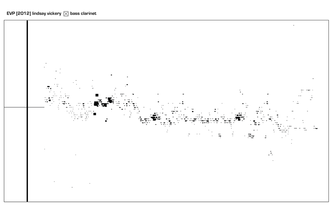
EVP (Electronic Voice Phenomenon) describes the deliberate or inadvertent capturing of the voices of ghosts on electronic media such as tape recorders, video or radio. Around the world many thousands of people participate in projects to investigate spectral presences in haunted spaces by recording and then painstakingly analysing recordings. Whether this is a real phenomenon or an example of mental pattern recognition—finding structures in random data, like an aural Rorschach Test—is a matter of opinion. In this work, a collage is generated from a number of EVP recordings. The performers emulate the sounds with extended techniques on their instruments with the aid of a scrolling score that shows relative the pitch, duration and dynamics of the EVP samples in real-time. For reasons that are not entirely clear to me this is my the third recent work, following Ghosts of Departed Quantities (2010) and The Talking Board (2011), to explore the supernatural.
|
explanation of the score of EVP
|
video of live performance by decibel
|
Performances:
20120528 Decibel, small things, Studio Underground, State Theatre Centre, Perth
20221221 Decibel, Bath Spa University
20221223 Decibel, Yoko Ono Lennon Centre, Liverpool
20120528 Decibel, small things, Studio Underground, State Theatre Centre, Perth
20221221 Decibel, Bath Spa University
20221223 Decibel, Yoko Ono Lennon Centre, Liverpool

